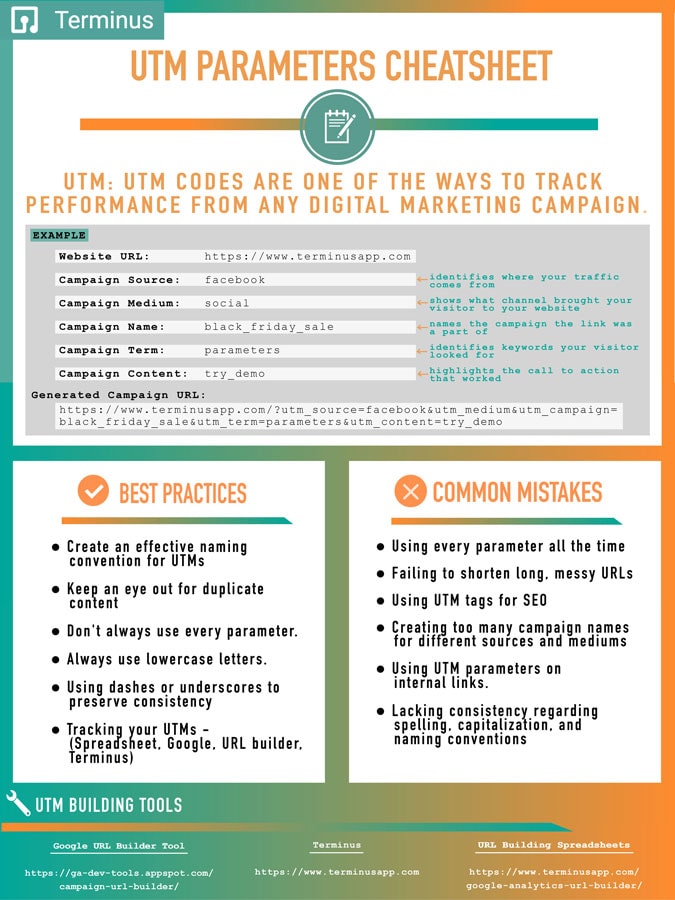To create and use UTM parameters effectively, follow these key steps:
-
Understand UTM parameters: UTM parameters are tags added to URLs that help track the source and effectiveness of marketing campaigns. The five main parameters are:
- utm_source (required): Identifies the traffic source (e.g., facebook, newsletter).
- utm_medium (required): Specifies the marketing medium (e.g., cpc, email).
- utm_campaign: Names the specific campaign (e.g., summer_sale).
- utm_term (optional): Tracks paid keywords.
- utm_content (optional): Differentiates similar content or links within the same campaign.
-
Create consistent and clear naming conventions:
- Use consistent case (all lowercase recommended) to avoid duplication in analytics.
- Keep names short but descriptive for readability and ease of management.
- Develop a naming convention for campaigns and channels to maintain clarity across your team.
-
Tag all traffic you control:
- Apply UTM parameters to all marketing links you distribute (ads, emails, social posts) to ensure comprehensive tracking.
- Avoid tagging internal links to prevent skewing data.
-
Use a UTM builder tool:
- Use tools like Google Analytics Campaign URL Builder to generate properly formatted URLs without errors (no spaces, correct parameter order).
- This reduces manual errors and ensures consistency.
-
Keep a centralized list of UTM links:
- Maintain a shared spreadsheet or document with all UTM-tagged URLs.
- This prevents duplication and confusion, especially when multiple team members create campaign links.
-
Integrate UTM data with analytics and CRM:
- Connect UTM parameters with Google Analytics 4 or other analytics platforms to analyze traffic sources and campaign performance.
- Link UTM data to your CRM or marketing automation tools to track customer journeys and attribute conversions accurately.
-
Analyze and optimize campaigns:
- Use the data from UTM parameters to identify which sources, mediums, and campaigns drive the most traffic and conversions.
- Adjust marketing strategies based on insights to improve ROI.
Example of a UTM-tagged URL:
https://www.example.com/landing-page?utm_source=facebook&utm_medium=social&utm_campaign=spring_sale&utm_content=video_ad
This URL tracks visitors coming from Facebook social media as part of the "spring_sale" campaign, specifically clicking on a video ad.
By following these practices, you ensure accurate tracking, better campaign insights, and more informed marketing decisions.





